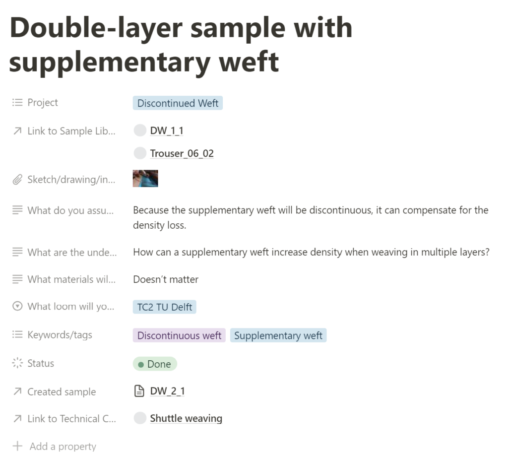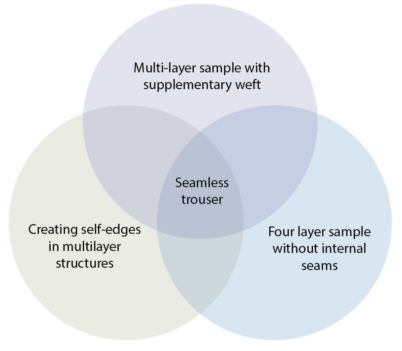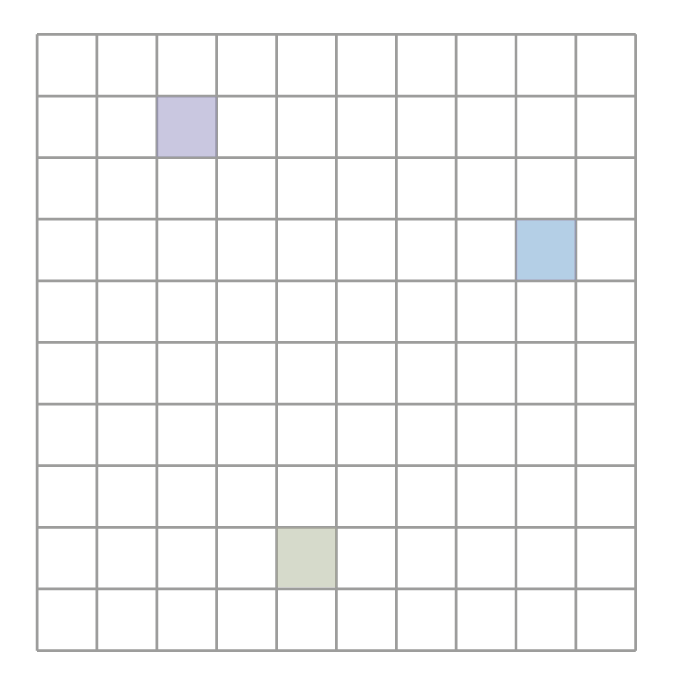Systematic Exploration
Systematic exploration is designed to help you determine which samples to create and to communicate your ideas for sample-making, which are often based on tacit knowledge.
I often struggled in my practice to explain the reasons behind creating particular samples, as much of my decision-making is based on intuition.
That’s why I created the Systematic Exploration tool: to unpack the different assumptions, experiences, and knowledge that lead to this intuition and provide a visual and systematic approach. This phase is designed to work together with the sample library and technical characterization, allowing you to develop ideas and plan your samples.
I found that placing your ideas in the context you experience them as a textile designer is crucial for effective communication. Therefore, I started collecting all relevant information associated with each idea in a digital Notion database.
To illustrate Systematic Exploration, I will use the project where I explored the use of a discontinued weft. A discontinued weft can be made with a shuttle, for example used in brocade weaving, to weave only valuable silk, gold, and silver yarns where they are needed. This is in contrast to rapier weaving, where the yarn inserted on the loom is continued throughout the whole width of the fabric. Therefore, one benefit is that the yarn can be placed where needed, providing opportunities for woven textile forms.

At the start of this project, I consulted my sample library. In it, there was one project and one sample that together could inform the start of this project, the woven textile-form trouser and a sample I had once made but never really continued with. Therefore, these are linked on the page. Furthermore, giving it a title already makes you think about the key features of the sample.
By describing what you think will happen, you can also uncover the questions behind sample creation. For example, in this sample, I thought that because the supplementary weft would be discontinuous, it could compensate for the density loss. This leads to the question: How can a supplementary weft increase density when weaving in multiple layers? Together with sketches and drawings, you can plan your sample making, and communicate your ideas through this form to collaborators.
To determine what samples together will get you to what you want to create, I suggest creating a venn diagram, so you can map out what you need to know, what samples will create the overlap, that will generate enough knowledge for the creation of the thing you want to make, in my case, a seamless trouser.

To determine what samples together will get you to what you want to create, I suggest creating a diagram, so you can map out what you need to know, what samples will create the overlap that will generate enough knowledge for the creation of the thing you want to make, in my case, a seamless trouser.
In the end, I think you can approach sample-making planning like this: If you need to make multiple samples to understand the variables or conditions to create your work fully, you could pick a few blocks on the grid to start testing first. If these do not provide the answers you were looking for or create new questions, you can add a few more blocks. It is important to understand that you do not need to create all of these samples, but just a few together can already provide a good understanding.
